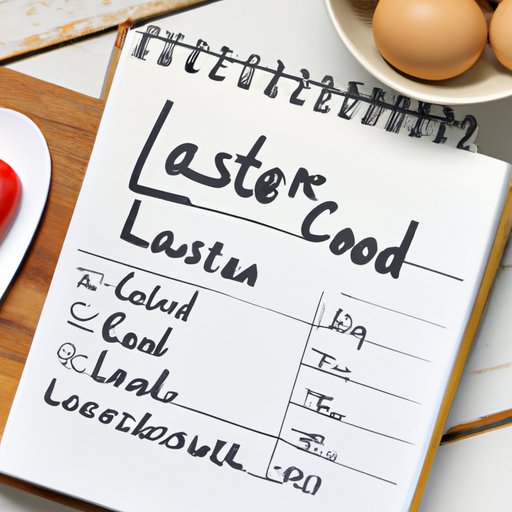
Introduction
Cholesterol is a type of fat that is found in all cells of the body and is necessary for the proper functioning of the body. However, too much cholesterol in the bloodstream can lead to serious health problems, including heart disease. In this article, we will explore what a cholesterol-lowering diet is and how it can help improve heart health.
Understanding Cholesterol
Cholesterol comes in two main forms: low-density lipoprotein (LDL) or “bad” cholesterol and high-density lipoprotein (HDL) or “good” cholesterol. LDL cholesterol is considered bad because it can contribute to plaque buildup in arteries leading to heart disease. HDL cholesterol, on the other hand, helps to remove excess cholesterol from the bloodstream and carries it to the liver where it can be broken down and removed from the body.
In terms of healthy cholesterol levels, it is recommended that LDL cholesterol levels be under 100 mg/dL and HDL cholesterol levels be above 60 mg/dL. Additionally, it is important to maintain a healthy ratio of total cholesterol to HDL cholesterol, with the ideal number being below 3.5.
Foods to Include in a Cholesterol-Lowering Diet
One of the most effective ways to lower cholesterol levels is to make changes to your diet. Here are some foods that are known to help lower cholesterol:
- Oatmeal and oat bran
- Beans and legumes
- Nuts
- Fatty fish like salmon and tuna
- Avocado
- Fruits and vegetables
- Whole grains
These foods contain high levels of fiber, vitamins, and healthy fats that can help reduce levels of LDL cholesterol. Incorporating these foods into your diet can be easy – for example, adding oatmeal or oat bran to your breakfast, snacking on nuts throughout the day, or adding avocado to your lunchtime salad.
Foods to Avoid
On the other hand, there are certain foods that can raise your cholesterol levels and should be avoided as much as possible. These foods include:
- Foods high in saturated and trans fats, such as fatty meats, fried foods, and processed snacks
- Full-fat dairy products
- Egg yolks
- Shellfish
These foods are high in cholesterol and can cause levels of LDL cholesterol to rise. Alternative options to these foods include lean protein sources like chicken or fish, low-fat dairy products, and egg whites.
Meal Planning and Recipes
If you’re looking to follow a cholesterol-lowering diet, here’s a sample meal plan to get you started:
- Breakfast: Oatmeal with chopped nuts and fresh fruit
- Snack: Apple slices with almond butter
- Lunch: Grilled salmon with avocado and a side salad
- Snack: Carrot sticks with hummus
- Dinner: Baked chicken breast with roasted vegetables and quinoa
In addition to these meals, there are plenty of delicious recipes that can be modified to fit a cholesterol-lowering diet. For example, swapping out full-fat dairy products for low-fat or non-fat options, using egg whites instead of whole eggs, and baking or grilling meats instead of frying them.
Lifestyle Changes
In addition to modifying your diet, there are lifestyle changes that can help lower cholesterol levels naturally. One of the most effective is regular exercise – even just 30 minutes of moderate exercise per day can help reduce levels of LDL cholesterol and improve heart health. Maintaining a healthy weight and quitting smoking are other important lifestyle changes that can help improve overall health and reduce the risk of heart disease.
Conclusion
If you’re looking to improve your heart health and lower your cholesterol levels, making changes to your diet and lifestyle is a great place to start. By incorporating foods that are known to lower cholesterol, avoiding those that raise cholesterol levels, and incorporating regular exercise into your routine, you can significantly improve your overall health and well-being.





